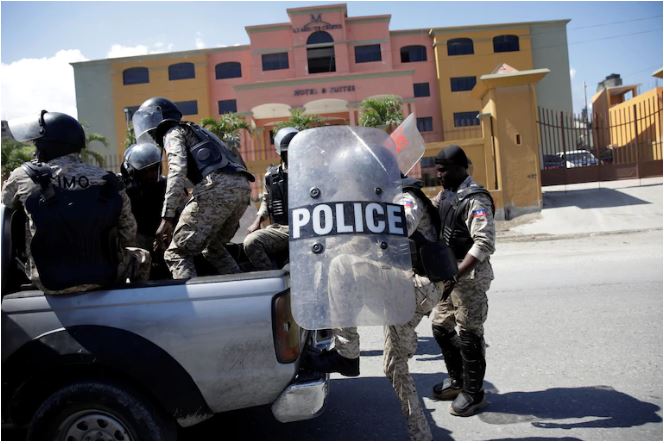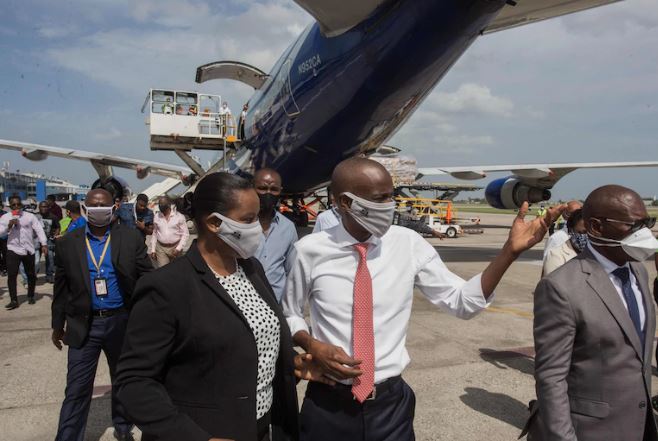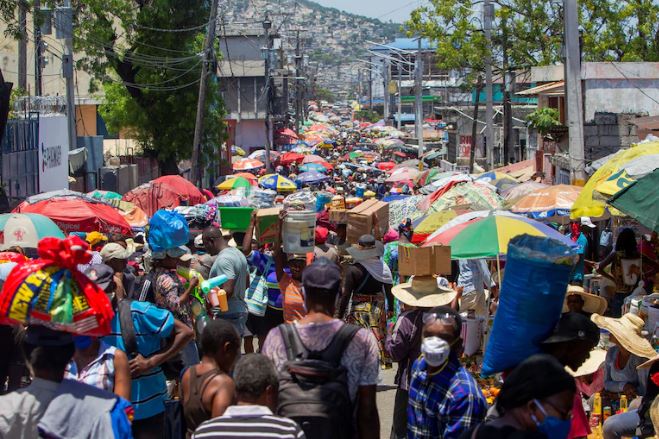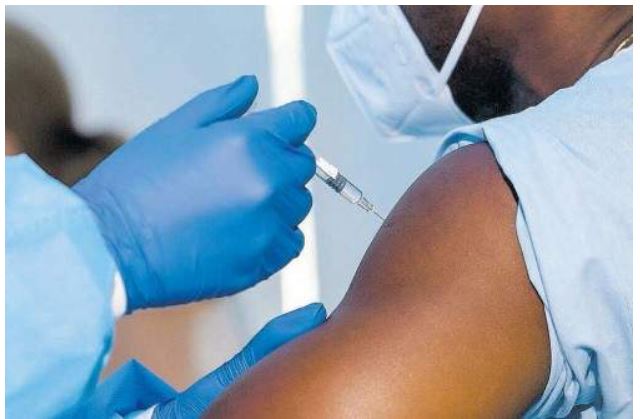For a while, the land border that separates Haiti and the Dominican Republic was also the demarcation point between two very different coronavirus outbreaks.
In the Dominican Republic, which draws tourists from around the world, cases surged to the highest level in the Caribbean. In Haiti, which had grown more isolated during a year of political violence, the population appeared to have been largely spared.
But over the last few weeks, that has begun to change, as tens of thousands of Haitian workers have returned from the Dominican Republic to their own country, many bringing the virus with them. That flow of returnees is expected to spark an outbreak that the poorest country in the Western Hemisphere will be unable to fight.
“This epidemic is a tinderbox in the process of burning and will explode in the coming weeks,” said Jean William Pape, a doctor who is the co-director of Haiti’s presidential commission on the novel coronavirus.
Haiti and the Dominican Republic each have populations of around 11 million, but few neighboring countries are as unequal. The average Haitian is almost 10 times poorer than the average Dominican. Haiti’s infant mortality rate is twice as high. At least 500,000 Haitians work in the Dominican Republic; the remittances they send home make up a third of Haiti’s GDP.
As the Dominican Republic closed down in response to its coronavirus outbreak, it suspended the temporary legal status of more than 150,000 of those Haitian workers. Undocumented Haitians also lost jobs. By this month, the International Organization for Migration (IOM) estimates, 22,000 Haitians were returning home each week.
“This is now the main vector of the disease,” said Sandra Lamarque, the head of mission for Doctors Without Borders in Haiti.
The Haitian government and international NGOs rushed to set up facilities along the border to screen returnees. But most entered the country through informal crossing points, and even some of those who showed symptoms at official crossings quietly continued into the interior of the country.
“Haitian people are being forced out of the Dominican Republic and also running from the virus there,” Pape said. “Border crossings and the inability to practice social distancing and refusal by large parts of the population to wear masks in public make this epidemic undeniable.”

Jhonny Jean Baptiste, 22, was working at a call center in the Dominican city of San Francisco last month when his bosses told him the center was closing and that he should return to Haiti.
“I had no choice,” he said. “The Dominican government wanted us out.”
Baptiste took a minibus to the border, where he saw hundreds more Haitians also heading home.
“I thought, ‘Haiti isn’t infected like the DR,’ ” he said. “But now we’ll see what happens.”
Haiti has four medical centers with a total of 200 beds treating patients with covid-19, the illness caused by the coronavirus. The government and NGOs are planning to set up more facilities, but several communities have opposed the construction of such centers, which they worry could spread the virus in their neighborhoods.
“There are 200 beds, and models predict that we will need up to 9,000 beds at the peak,” Pape said. “The number of predicted cases is as high as 313,000. Haiti is not prepared — many hospitals are refusing to work to diagnose and treat covid patients due to lack of [personal protective equipment], stigma and no preparation.”

Haiti has tested about 1,300 people and confirmed 234 cases. For the first time this week, the virus registered exponential growth. The Dominican Republic has confirmed 11,320 cases.
The United States, meanwhile, has continued to deport Haitians, including at least three who tested positive for the virus after arriving. Of those three, one man escaped from a quarantine facility in Port-au-Prince last month, raising concerns about yet another vector of community transmission.
“There’s virtually no intensive care unit for covid, and yet they still maintain deportations,” Lamarque said. “We think it’s irresponsible.”
U.S. Immigration and Customs Enforcement says it conducts medical screenings of deportees before the flights take off.
Haiti’s public health infrastructure has been eroded over the last decade by a succession of crises: the 2010 earthquake that killed at least 200,000 people, a subsequent cholera outbreak that killed another 10,000, and political clashes last year that caused violence to surge.
In January, before the coronavirus had arrived in the Western Hemisphere, Doctors Without Borders assessed Haiti’s health-care sector a decade after the earthquake.
“Most medical humanitarian organizations have left the country,” the organization reported, “and Haiti’s medical system is once again on the brink of collapse amid an escalating political and economic crisis.”
Haiti this week received several shipments of medical supplies, including personal protective equipment, from China. The United Nations said it has struggled to raise foreign donations to prepare for the impending disaster.

Francky Cledanor, 46, has lived in the Vallée de Bourdon, a slum in Port-au-Prince, since 2000. His house was destroyed in the 2010 earthquake; he rebuilt it with wood and sheet metal. In recent days, he and his neighbors had been trying to decide what they would do if one of them became ill.
“Haiti is not ready,” he said. “We do not have a health center in our neighborhood. We do not know which hospital receives people who are sick with corona. For cholera, we knew where to go, but now no. We do not have enough information.”
As Haitians pour back into the country from the Dominican Republic, the IOM has helped the government set up the border screenings. Returnees with fevers are asked to stay overnight and receive medical attention. But the medical teams on the border do not currently have access to coronavirus tests.
Because of the stigma attached to the disease, many people with symptoms have resisted quarantine. Those with fevers are referred to local hospitals, but not all choose to go.
“There have been instances where people have threatened to burn down the houses of people suspected of having covid-19,” Pape said. “The disease is not well understood by the general population.”
Haitian officials and aid workers worry about the next phase in cross-border migration — when Haiti’s coronavirus cases peak and the cases in the Dominican Republic begin to decline. At that point, thousands of Haitians are likely to attempt to cross back into the country next door.
Dominican Health Minister Rafael Sánchez Cárdenas last week called Haiti “a major threat to the Dominican Republic from a health point of view” and promised tighter border controls.
Baptiste, the call center worker, said he would most likely wait in Haiti for three months before returning to the Dominican Republic.
“There’s no way to make money in Haiti,” he said. “I’ll need to go back.”
Bruno Lemarquis, the deputy special representative of the United Nations integrated office in Haiti, predicted a “reverse flow.”
“The Caribbean is only as solid as its weakest health system, which is in Haiti,” Lemarquis said. “If it doesn’t go well here, we know what will happen. People will leave.”





From the WP